What are Large-Cap Stocks?
Large-cap stocks, or "large capitalization stocks," refer to shares of companies with a market capitalization exceeding $10 billion. These stocks typically represent well-established businesses with a dominant presence in their respective industries. Due to their size and market influence, large-cap companies are often considered a cornerstone of many investment portfolios, particularly for investors seeking stability.
One key advantage of large-cap stocks is their relative stability compared to small-cap stocks. They tend to be less volatile, making them a safer choice during uncertain market conditions. Prominent examples of large-cap stocks include industry leaders like Apple, Microsoft, and Johnson & Johnson. These companies are known for their strong financial performance, consistent dividend payouts, and long-term growth potential, which appeal to conservative and growth-oriented investors alike.
Market capitalization and its significance
Market capitalization, or "market cap," measures the total value of a company's outstanding shares and serves as a key indicator of its size and market position. It is calculated by multiplying the current stock price by the total number of shares available. Investors and analysts frequently use market cap to assess a company's financial standing and growth potential within its industry.
One of the primary benefits of market cap is its ability to classify companies into categories—small-cap, mid-cap, and large-cap—based on their size. This categorization helps investors compare businesses and tailor their investment strategies. For example, small-cap companies often offer higher growth potential but come with increased risks, while large-cap companies are typically more stable, appealing to risk-averse investors.
Characteristics of large-cap stocks
Large-cap stocks are shares of well-established companies with a proven track record of success. These businesses often have decades of consistent performance, showcasing their ability to adapt and thrive in various market conditions. Their long-standing history instills confidence in investors, making large-cap stocks a reliable choice for both seasoned and novice investors.
Typically, large-cap companies dominate their industry sectors, boasting a strong presence in the business landscape. They are recognized as leaders, often setting benchmarks for innovation, revenue generation, and market influence. This leadership status further enhances their appeal to investors seeking established names in the stock market.
One of the defining characteristics of large-cap stocks is their relative safety as investment options. Known for their stability and strong financial fundamentals, these stocks are less prone to drastic market swings compared to smaller companies. This makes them ideal for risk-averse investors aiming to preserve wealth while benefiting from steady, long-term growth.
Benefits of Investing in Large-Cap Stocks: Stability and lower volatility
Investing in large-cap stocks offers the distinct advantage of reduced volatility compared to smaller-cap stocks. These stocks belong to well-established companies, providing a sense of security during turbulent market periods. Due to their stability, large-cap stocks are often favored by risk-averse investors seeking consistent returns without the frequent ups and downs seen in smaller companies.
Another key benefit is their role as benchmarks for the overall market. Large-cap stocks, such as those in major indexes like the S&P 500, serve as indicators of market health and performance. Their reliable nature makes them a safer option for investors aiming to preserve wealth while still capitalizing on steady growth opportunities over time.
Established brand reputation and market presence
Large-cap stocks often represent household names that are easily recognizable across industries. These companies have built a strong brand reputation through years of consistent performance, innovation, and customer trust. Their established market presence ensures they remain influential in the global economy, making them an appealing choice for both new and experienced investors.
Often referred to as blue-chip stocks or market stalwarts, large-cap stocks symbolize stability and reliability in the stock market. They are widely regarded as leaders in their sectors, offering investors steady growth and dependable returns. This reputation for resilience makes large-cap stocks a cornerstone of many long-term investment portfolios.
Potential for long-term growth and dividends
Large-cap stocks offer significant potential for long-term share price growth, making them an essential component of a well-diversified portfolio. These stocks represent established companies with the resources and resilience to navigate various market conditions, positioning them as a reliable choice for investors seeking steady capital appreciation over time.
In addition to growth potential, large-cap stocks often provide consistent dividend payouts derived from excess income generation. This makes them an attractive option for investors looking to generate a stable source of income. The combination of dividends and growth potential ensures that large-cap stocks remain a cornerstone of income-focused and growth-oriented investment strategies alike.
Evaluating Large-Cap Stocks: Financial performance and growth prospects
Evaluating large-cap stocks involves analyzing key financial metrics such as revenue, which reflects a company’s ability to generate income and sustain growth. Consistently high or growing revenue indicates strong business performance and market demand. Investors often prioritize revenue trends when assessing the potential of large-cap stocks, ensuring the companies they invest in are positioned for continued success.
Beyond financial performance, large-cap stocks often boast competitive strengths like a strong brand, proven leadership, and market dominance. These attributes contribute to their resilience and ability to reward investors over time. Many large-cap companies have a track record of offering dividends, initiating share repurchase programs, and delivering long-term share price growth, making them appealing options for both income-focused and growth-oriented portfolios.
Valuation and dividend yield
Valuation and dividend yield are key factors when analyzing large-cap stocks, providing insight into their investment potential. Metrics like the price-to-earnings (P/E) ratio help assess a stock’s current valuation relative to its earnings, guiding investors in determining whether a large-cap stock is fairly priced. Dividend yield, on the other hand, measures the annual dividend income as a percentage of the stock’s price, offering a clear perspective on its income-generating potential.
For income-focused investors, large-cap stocks with a high dividend yield can be particularly appealing. These stocks not only provide a steady income stream but also represent established companies with strong fundamentals. By evaluating both valuation and dividend yield, investors can identify large-cap stocks that balance income generation with long-term growth opportunities.
The Top Large-Cap Stocks Across Various Sectors
In the technology sector, large-cap stocks like Apple, Microsoft, and Nvidia dominate the market with their strong performance and innovative capabilities. Apple is renowned for its powerful brand reputation and global market presence, offering cutting-edge products that shape the tech landscape. Microsoft, a diversified technology leader, excels in software, cloud services, and enterprise solutions, solidifying its position as a market powerhouse. Nvidia stands at the forefront of AI computing and deep learning, driving advancements in graphics processing and artificial intelligence technology.
E-commerce giants Amazon and Alphabet lead their sector with unparalleled innovation and market reach. Amazon is a dominant force in online retail, cloud computing, and entertainment, consistently expanding its influence and customer base. Alphabet, the parent company of Google, controls nearly 90% of the global search engine market share, showcasing its indispensable role in digital advertising and technology solutions.
In the financial sector, JPMorgan Chase and Visa are standout large-cap stocks offering stability and growth. JPMorgan Chase is a leading financial institution with a robust market presence, excelling in banking, asset management, and investment services. Visa, a globally recognized provider of payment solutions, enjoys a strong brand reputation and plays a crucial role in the ever-growing digital payments ecosystem.
These top large-cap stocks across technology, e-commerce, and finance sectors exemplify stability, growth potential, and innovation. Their leadership in their respective industries makes them attractive choices for investors seeking reliable, long-term investments. Each of these companies showcases unique strengths, making them integral to diversified portfolios.
By investing in these market leaders, investors gain exposure to some of the most resilient and innovative companies shaping the global economy. Their track records of performance and market dominance highlight their enduring appeal across varying economic climates.
Risk management and Diversification with Large Cap Stocks
Large-cap stocks play a crucial role in portfolio diversification, helping investors reduce overall risk. Their stability and strong financial fundamentals make them an excellent foundation for a balanced investment strategy. By including large-cap stocks alongside small-cap or mid-cap stocks, bonds, and other asset classes, investors can spread risk across various market sectors and reduce exposure to market volatility.
Effective risk management is essential for maximizing returns while minimizing losses. Incorporating large-cap stocks into a diversified portfolio not only enhances stability but also provides a dependable source of growth and income. This balanced approach ensures that investors are well-prepared to navigate changing market conditions while maintaining their long-term financial goals.
Large-Cap Funds and ETFs: Vanguard S&P 500 ETF
The Vanguard S&P 500 ETF is a popular large-cap fund that closely tracks the performance of the S&P 500 index, offering exposure to 500 of the largest U.S. companies. With an extremely low expense ratio of just 0.03%, this ETF stands out as a cost-effective option for investors looking to minimize fees while gaining access to a diversified portfolio of industry leaders.
Ideal for new investors and those who prefer a passive investment approach, the Vanguard S&P 500 ETF provides an easy entry point into the world of large-cap stocks. Its simplicity, broad market representation, and potential for steady long-term growth make it a reliable choice for building a stable investment portfolio.
Fidelity Contrafund
Fidelity Contrafund is a well-known actively managed mutual fund that focuses on large-cap and mega-cap stocks, providing investors with exposure to some of the market's most established companies. With a seasoned fund manager aiming to outperform the S&P 500, it offers an opportunity for potentially higher returns compared to index-tracking funds.
With an expense ratio of 0.86%, Fidelity Contrafund balances active management with a focus on growth-oriented investments. Its strategy appeals to investors seeking professional expertise to navigate market opportunities and enhance portfolio performance, making it a popular choice for long-term growth seekers.
Starting your large-cap stock investment journey
Starting your large-cap stock investment journey begins with opening a brokerage account. A brokerage or trading platform allows investors to buy and sell large-cap stocks conveniently. Many brokers provide user-friendly interfaces, research tools, and educational resources, making it easier for beginners to navigate the stock market confidently.
To minimize risks and maximize returns, investors should consider building a diversified portfolio. Mixing large-cap stocks with other asset classes like mid-cap stocks, bonds, or ETFs helps reduce exposure to market fluctuations. This balanced approach ensures a stable foundation for long-term financial growth while maintaining flexibility in changing market conditions.
Conclusion
Large-cap stocks stand out as essential building blocks for any investment portfolio, offering stability, strong financial performance, and long-term growth potential. They represent established companies with proven leadership and market presence, often providing consistent dividends and serving as benchmarks for market performance. Investors seeking reliability and steady income will find large-cap stocks to be an appealing option.
Whether it's investing in individual stocks like Apple, Amazon, or JPMorgan Chase, or opting for funds like the Vanguard S&P 500 ETF and Fidelity Contrafund, large-cap investments cater to a wide range of investor goals. By incorporating large-cap stocks into a diversified portfolio, alongside other asset classes, investors can effectively manage risks and achieve financial resilience. Starting your journey with tools like brokerage accounts and sound strategies will set the foundation for long-term success in the market.







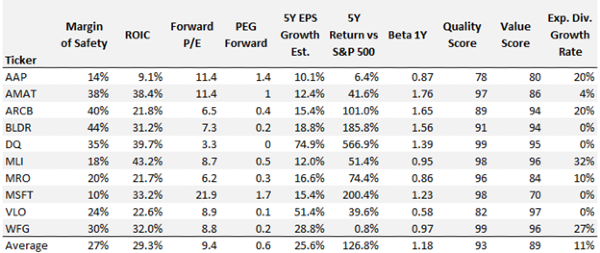

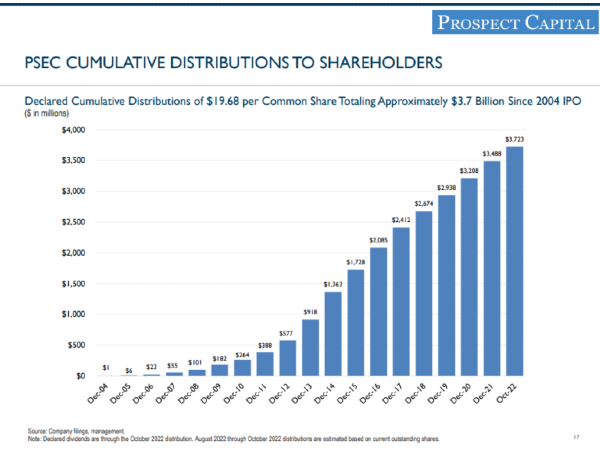




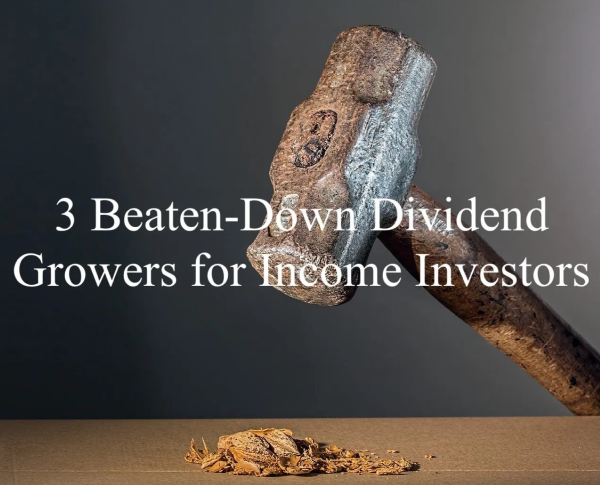

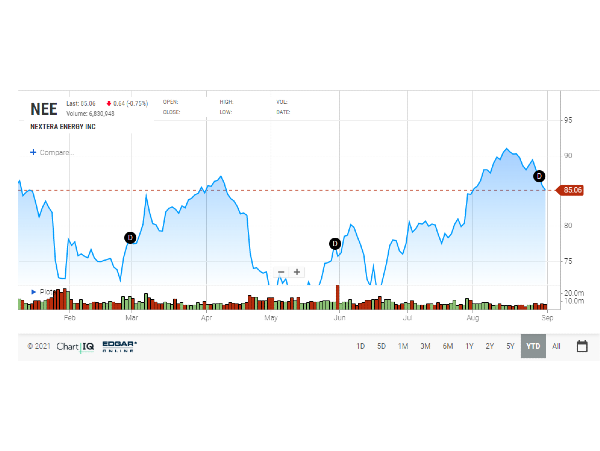

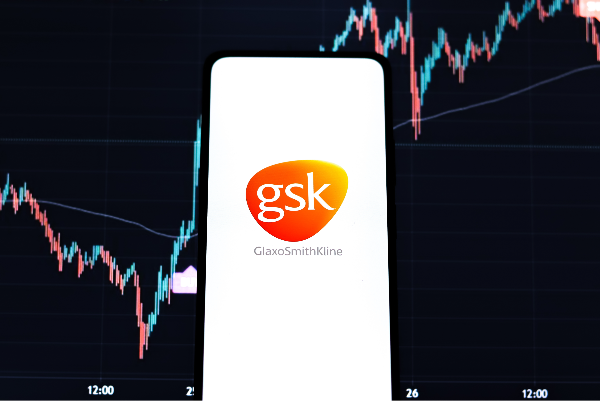











What are Large-Cap Stocks?
Large-cap stocks, or "large capitalization stocks," refer to shares of companies with a market capitalization exceeding $10 billion. These stocks typically represent well-established businesses with a dominant presence in their respective industries. Due to their size and market influence, large-cap companies are often considered a cornerstone of many investment portfolios, particularly for investors seeking stability. One key advantage of large-cap stocks is their relative stability compared to small-cap stocks. They tend to be less volatile, making them a safer choice during uncertain market conditions. Prominent examples of large-cap stocks include industry leaders like Apple, Microsoft, and Johnson & Johnson. These companies are known for their strong financial performance, consistent dividend payouts, and long-term growth potential, which appeal to conservative and growth-oriented investors alike.
Market capitalization and its significance
Market capitalization, or "market cap," measures the total value of a company's outstanding shares and serves as a key indicator of its size and market position. It is calculated by multiplying the current stock price by the total number of shares available. Investors and analysts frequently use market cap to assess a company's financial standing and growth potential within its industry. One of the primary benefits of market cap is its ability to classify companies into categories—small-cap, mid-cap, and large-cap—based on their size. This categorization helps investors compare businesses and tailor their investment strategies. For example, small-cap companies often offer higher growth potential but come with increased risks, while large-cap companies are typically more stable, appealing to risk-averse investors.
Characteristics of large-cap stocks
Large-cap stocks are shares of well-established companies with a proven track record of success. These businesses often have decades of consistent performance, showcasing their ability to adapt and thrive in various market conditions. Their long-standing history instills confidence in investors, making large-cap stocks a reliable choice for both seasoned and novice investors.
Typically, large-cap companies dominate their industry sectors, boasting a strong presence in the business landscape. They are recognized as leaders, often setting benchmarks for innovation, revenue generation, and market influence. This leadership status further enhances their appeal to investors seeking established names in the stock market.
One of the defining characteristics of large-cap stocks is their relative safety as investment options. Known for their stability and strong financial fundamentals, these stocks are less prone to drastic market swings compared to smaller companies. This makes them ideal for risk-averse investors aiming to preserve wealth while benefiting from steady, long-term growth.
Benefits of Investing in Large-Cap Stocks: Stability and lower volatility
Investing in large-cap stocks offers the distinct advantage of reduced volatility compared to smaller-cap stocks. These stocks belong to well-established companies, providing a sense of security during turbulent market periods. Due to their stability, large-cap stocks are often favored by risk-averse investors seeking consistent returns without the frequent ups and downs seen in smaller companies.
Another key benefit is their role as benchmarks for the overall market. Large-cap stocks, such as those in major indexes like the S&P 500, serve as indicators of market health and performance. Their reliable nature makes them a safer option for investors aiming to preserve wealth while still capitalizing on steady growth opportunities over time.
Established brand reputation and market presence
Large-cap stocks often represent household names that are easily recognizable across industries. These companies have built a strong brand reputation through years of consistent performance, innovation, and customer trust. Their established market presence ensures they remain influential in the global economy, making them an appealing choice for both new and experienced investors.
Often referred to as blue-chip stocks or market stalwarts, large-cap stocks symbolize stability and reliability in the stock market. They are widely regarded as leaders in their sectors, offering investors steady growth and dependable returns. This reputation for resilience makes large-cap stocks a cornerstone of many long-term investment portfolios.
Potential for long-term growth and dividends
Large-cap stocks offer significant potential for long-term share price growth, making them an essential component of a well-diversified portfolio. These stocks represent established companies with the resources and resilience to navigate various market conditions, positioning them as a reliable choice for investors seeking steady capital appreciation over time.
In addition to growth potential, large-cap stocks often provide consistent dividend payouts derived from excess income generation. This makes them an attractive option for investors looking to generate a stable source of income. The combination of dividends and growth potential ensures that large-cap stocks remain a cornerstone of income-focused and growth-oriented investment strategies alike.
Evaluating Large-Cap Stocks: Financial performance and growth prospects
Evaluating large-cap stocks involves analyzing key financial metrics such as revenue, which reflects a company’s ability to generate income and sustain growth. Consistently high or growing revenue indicates strong business performance and market demand. Investors often prioritize revenue trends when assessing the potential of large-cap stocks, ensuring the companies they invest in are positioned for continued success.
Beyond financial performance, large-cap stocks often boast competitive strengths like a strong brand, proven leadership, and market dominance. These attributes contribute to their resilience and ability to reward investors over time. Many large-cap companies have a track record of offering dividends, initiating share repurchase programs, and delivering long-term share price growth, making them appealing options for both income-focused and growth-oriented portfolios.
Valuation and dividend yield
Valuation and dividend yield are key factors when analyzing large-cap stocks, providing insight into their investment potential. Metrics like the price-to-earnings (P/E) ratio help assess a stock’s current valuation relative to its earnings, guiding investors in determining whether a large-cap stock is fairly priced. Dividend yield, on the other hand, measures the annual dividend income as a percentage of the stock’s price, offering a clear perspective on its income-generating potential.
For income-focused investors, large-cap stocks with a high dividend yield can be particularly appealing. These stocks not only provide a steady income stream but also represent established companies with strong fundamentals. By evaluating both valuation and dividend yield, investors can identify large-cap stocks that balance income generation with long-term growth opportunities.
The Top Large-Cap Stocks Across Various Sectors
In the technology sector, large-cap stocks like Apple, Microsoft, and Nvidia dominate the market with their strong performance and innovative capabilities. Apple is renowned for its powerful brand reputation and global market presence, offering cutting-edge products that shape the tech landscape. Microsoft, a diversified technology leader, excels in software, cloud services, and enterprise solutions, solidifying its position as a market powerhouse. Nvidia stands at the forefront of AI computing and deep learning, driving advancements in graphics processing and artificial intelligence technology.
E-commerce giants Amazon and Alphabet lead their sector with unparalleled innovation and market reach. Amazon is a dominant force in online retail, cloud computing, and entertainment, consistently expanding its influence and customer base. Alphabet, the parent company of Google, controls nearly 90% of the global search engine market share, showcasing its indispensable role in digital advertising and technology solutions.
In the financial sector, JPMorgan Chase and Visa are standout large-cap stocks offering stability and growth. JPMorgan Chase is a leading financial institution with a robust market presence, excelling in banking, asset management, and investment services. Visa, a globally recognized provider of payment solutions, enjoys a strong brand reputation and plays a crucial role in the ever-growing digital payments ecosystem.
These top large-cap stocks across technology, e-commerce, and finance sectors exemplify stability, growth potential, and innovation. Their leadership in their respective industries makes them attractive choices for investors seeking reliable, long-term investments. Each of these companies showcases unique strengths, making them integral to diversified portfolios.
By investing in these market leaders, investors gain exposure to some of the most resilient and innovative companies shaping the global economy. Their track records of performance and market dominance highlight their enduring appeal across varying economic climates.
Risk management and Diversification with Large Cap Stocks
Large-cap stocks play a crucial role in portfolio diversification, helping investors reduce overall risk. Their stability and strong financial fundamentals make them an excellent foundation for a balanced investment strategy. By including large-cap stocks alongside small-cap or mid-cap stocks, bonds, and other asset classes, investors can spread risk across various market sectors and reduce exposure to market volatility.
Effective risk management is essential for maximizing returns while minimizing losses. Incorporating large-cap stocks into a diversified portfolio not only enhances stability but also provides a dependable source of growth and income. This balanced approach ensures that investors are well-prepared to navigate changing market conditions while maintaining their long-term financial goals.
Large-Cap Funds and ETFs: Vanguard S&P 500 ETF
The Vanguard S&P 500 ETF is a popular large-cap fund that closely tracks the performance of the S&P 500 index, offering exposure to 500 of the largest U.S. companies. With an extremely low expense ratio of just 0.03%, this ETF stands out as a cost-effective option for investors looking to minimize fees while gaining access to a diversified portfolio of industry leaders.
Ideal for new investors and those who prefer a passive investment approach, the Vanguard S&P 500 ETF provides an easy entry point into the world of large-cap stocks. Its simplicity, broad market representation, and potential for steady long-term growth make it a reliable choice for building a stable investment portfolio.
Fidelity Contrafund
Fidelity Contrafund is a well-known actively managed mutual fund that focuses on large-cap and mega-cap stocks, providing investors with exposure to some of the market's most established companies. With a seasoned fund manager aiming to outperform the S&P 500, it offers an opportunity for potentially higher returns compared to index-tracking funds.
With an expense ratio of 0.86%, Fidelity Contrafund balances active management with a focus on growth-oriented investments. Its strategy appeals to investors seeking professional expertise to navigate market opportunities and enhance portfolio performance, making it a popular choice for long-term growth seekers.
Starting your large-cap stock investment journey
Starting your large-cap stock investment journey begins with opening a brokerage account. A brokerage or trading platform allows investors to buy and sell large-cap stocks conveniently. Many brokers provide user-friendly interfaces, research tools, and educational resources, making it easier for beginners to navigate the stock market confidently.
To minimize risks and maximize returns, investors should consider building a diversified portfolio. Mixing large-cap stocks with other asset classes like mid-cap stocks, bonds, or ETFs helps reduce exposure to market fluctuations. This balanced approach ensures a stable foundation for long-term financial growth while maintaining flexibility in changing market conditions. Conclusion Large-cap stocks stand out as essential building blocks for any investment portfolio, offering stability, strong financial performance, and long-term growth potential. They represent established companies with proven leadership and market presence, often providing consistent dividends and serving as benchmarks for market performance. Investors seeking reliability and steady income will find large-cap stocks to be an appealing option.
Whether it's investing in individual stocks like Apple, Amazon, or JPMorgan Chase, or opting for funds like the Vanguard S&P 500 ETF and Fidelity Contrafund, large-cap investments cater to a wide range of investor goals. By incorporating large-cap stocks into a diversified portfolio, alongside other asset classes, investors can effectively manage risks and achieve financial resilience. Starting your journey with tools like brokerage accounts and sound strategies will set the foundation for long-term success in the market.